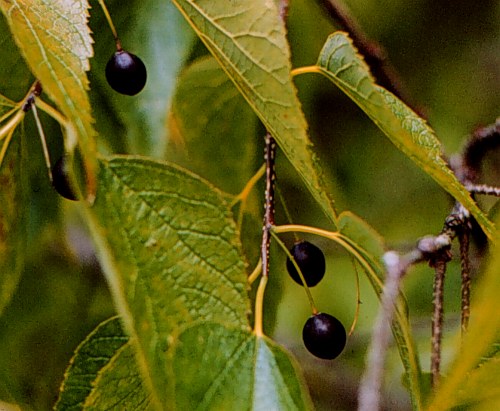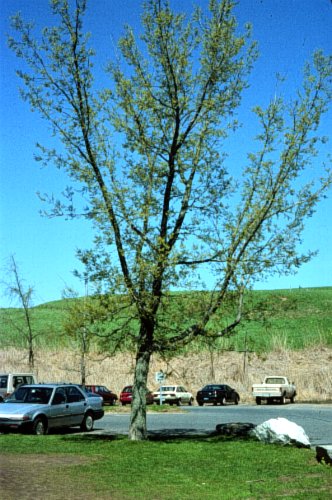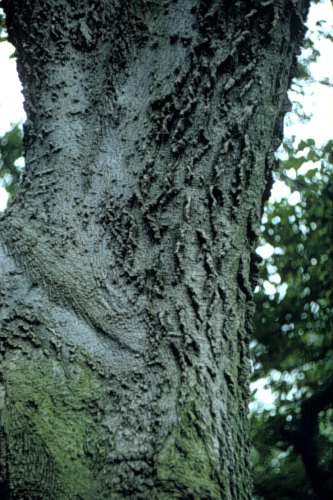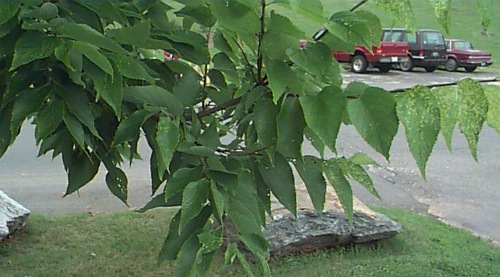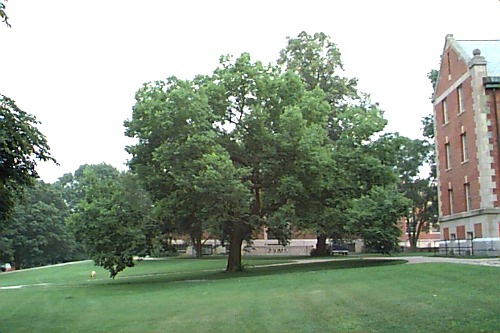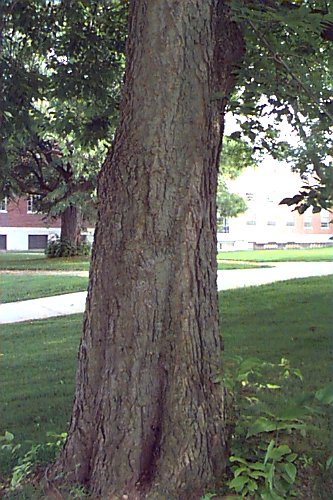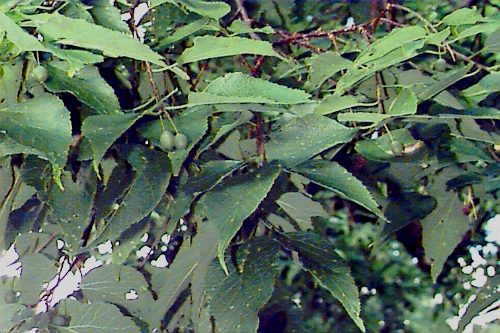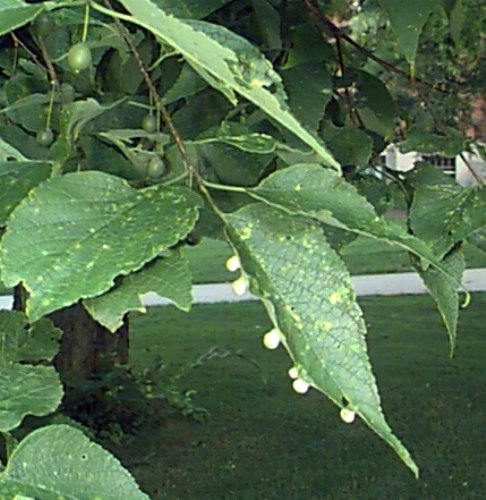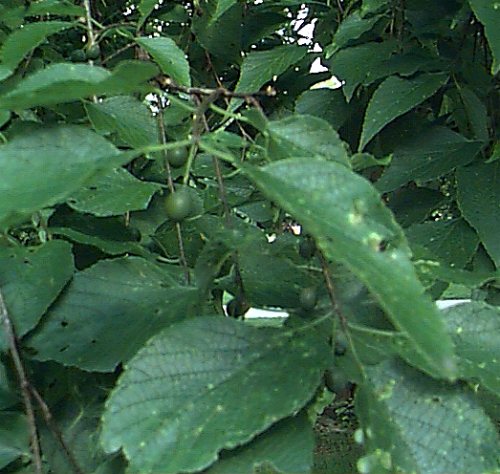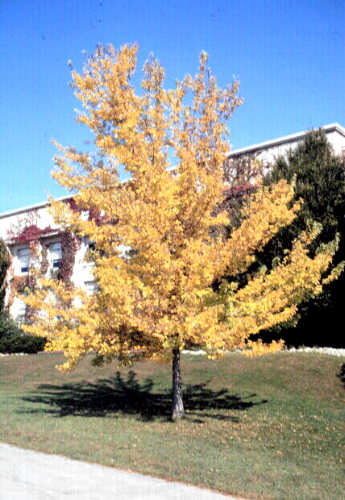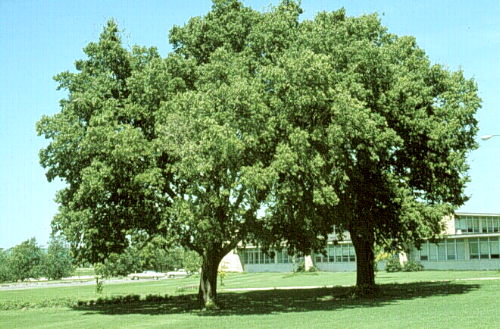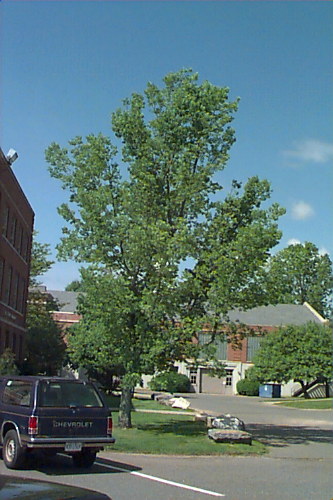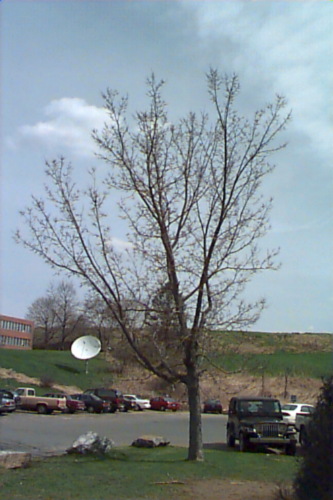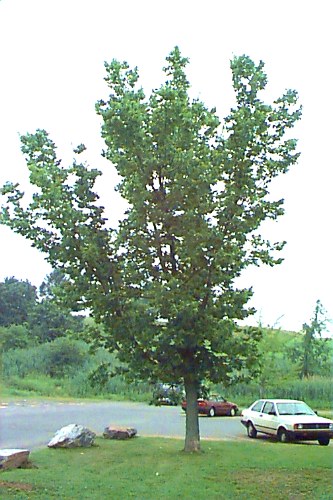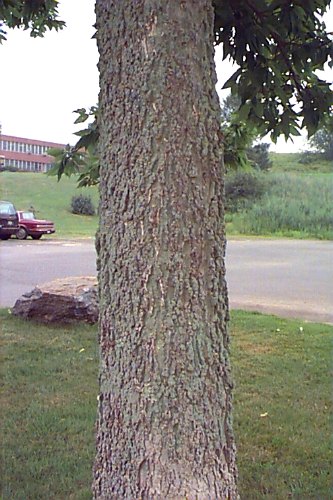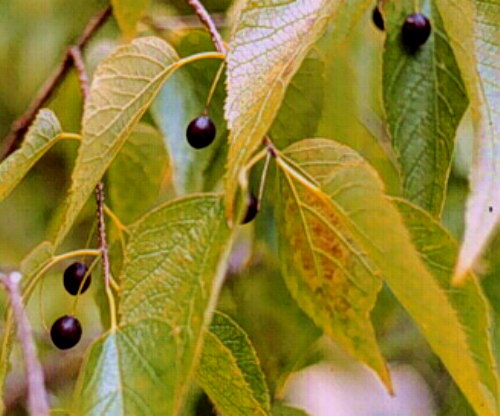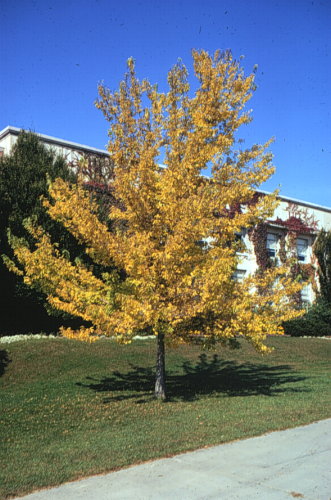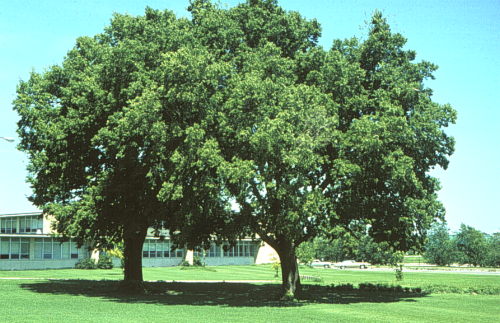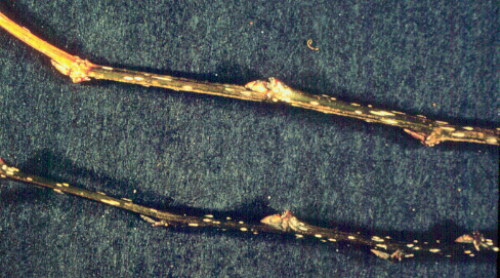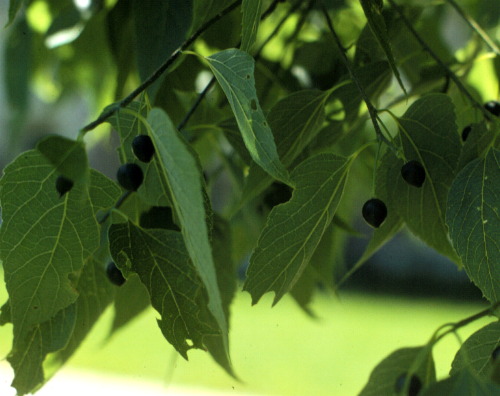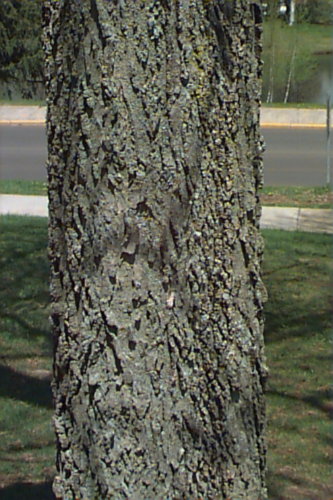Celtis occidentalis
Common Hackberry
Ulmaceae
ExpandHabitat
- native to Quebec & southwest to Oklahoma
- zone 3
Habit and Form
- a large deciduous tree
- cylindrical shape when mature
- 40' to 60' tall and has an almost equal spread
- branches tend to droop
- fast growth rate
- coarse texture
Summer Foliage
- alternate leaf arrangement
- leaves are simple and are 3" to 5" long
- oblique leaf base
- serrate margins at leaf tip
- medium green color, pale yellow-green leaf underside
- leaves are glabrous on underside especially around veins
- leaves have rough texture
Autumn Foliage
- yellow fall color
- not showy
Flowers
- blooms late April to early May
- emerge with leaves
- not ornamentally important
Fruit
- orangy-red fleshy fruit
- drupe
- ripen in September - October
- edible, sweet date taste
- not ornamentally important
- flesh surround hard seed that can break teeth
Bark
- grayish color
- bark is corky and unattractive
- stems have zigzag appearance
- prominent lenticels on stems
Culture
- easily transplant form B&B container or bare root
- prefers rich soil
- very soil adaptable
- tolerant of most conditions
- wind tolerant
- full sun
- urban tolerant
Landscape Use
- good tree for poor conditions
- park tree
- screen
- for edible fruit
Liabilities
- leaf spot, powdery mildew, hackberry nipple gall, scale
- witches' broom caused by insect
- problems don't kill tree, but make tree very unattractive
ID Features
- alternate leaf arrangement
- oblique leaf base
- rough leaf
- corky bark
- small, imbricate lateral buds
- terminal bud absent
- zigzag stem pattern
- serrated leaf tips
- small, red drupe fruit
Propagation
- by budding
- by seed
Cultivars/Varieties
- none of importance
